|
 Vertical Seismic Profiles On Wireline
Vertical Seismic Profiles On Wireline
Normal seismic sections are recorded by moving the detectors (geophones)
and seismic source horizontally along the ground or, in marine
surveys, near the surface of the water. Vertical seismic profiles,
as the name suggests, are run vertically in a wellbore to obtain
detailed seismic response near the wellbore. After correcting
for the very different geometry of such a survey, the results
are presented in seismic section format. They can be correlated
with conventional seismic data and with synthetic seismograms
made from the sonic and density logs in the same wellbore.
Because
the survey is taken in a wellbore, it is considered to be part
of the well logging process and is often run by logging service
companies after the more conventional logs and seismic reference
survey are completed. In many cases, the VSP replaces the checkshot
survey because, if properly designed, the same information can
be extracted from VSP records as from SRS records.
Since
the geophones are down the hole, surface distortions which affect
conventional seismic are reduced. This comparatively noise free
environment means that the VSP traces are less noisy than a synthetic
seismogram made from unedited sonic and density logs. It may even
be better than a well edited synthetic because no lithology, wavelet,
or filtering assumptions have to be made by the analyst. As a
result, VSP's have gradually replaced the synthetic seismogram.
There are other advantages, such as being able to see laterally
in 3-D around the borehole as well as below the bottom of the
well. A well can be sidetracked toward its target based on interpretation
of unexpected changes in lithology or structure observed on the
VSP.
A
major use of the VSP is to invert it into a syntetic acoustic
impedance log, and use this to predict overpressure below the
current depth of the well. The drilling program and mud properties
can be adjusted to reflrct overpressure zones detected on the
inverted impedance log. The images below demonstrate why you might
want to do this on any well in which pressure contril might be an
issue.
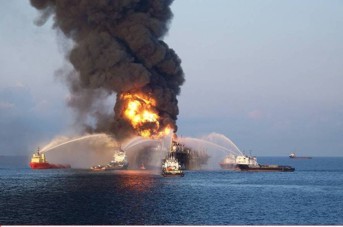
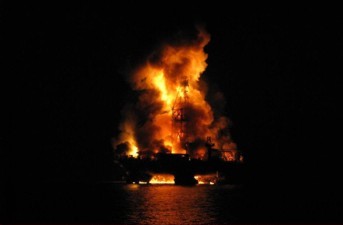
Vertical seismic profiles (VSP's) are the only survey that can
"see" below the current drilled depth, and can be used to predict
the depth of overpressuerd zones, reducing the risk of blowouts.
Integrated
sonic logs are still needed to fix the precise location of formation
tops on the VSP wiggle traces.
The
technique records both down going and up going seismic signals
simultaneously and these must be separated by suitable
data processing. This extra information helps to determine the
acoustic response of the earth and therefore the lithology near
the borehole.
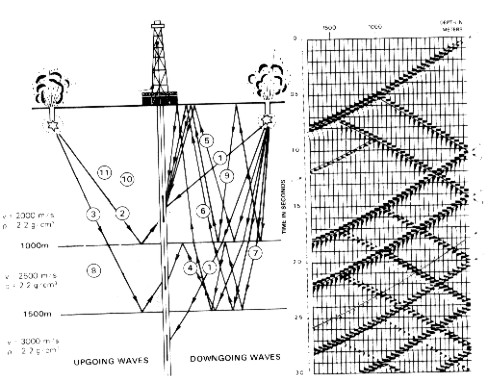
VSP geometry and schematic of up- and down-going
reflections
The
processing sequence is as follows:
1.
shot selection to eliminate dead or noisy traces
2.
trace editing to mute early arrivals
3.
consistency check of surface geophone signal
4.
stacking of shots taken at the same level
5.
bandpass filter to reduce noise and aliasing
6.
f-k filter to eliminate tube waves
7.
amplitude recovery
8.
down going signal alignment
9.
velocity filtering to separate down going from up going components
10.
predictive de-convolution to remove multiple reflections
11.
autocorrelation to check multiple removal
12.
automatic gain control
13.
time variant filtering to match conventional seismic section
14.
corridor stacking to sum all the up going waves
This
sequence and some of the intermediate results are shown below. Some of these operations, such as stacking, band pass filter,
and de-convolution can be done in the computerized logging truck
at the well site.
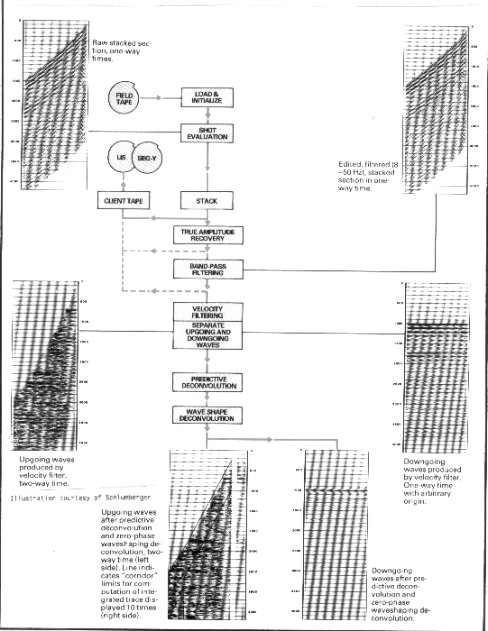
VSP processing sequence and intermediate results
Creation
of a seismic inversion trace or Seislog from this data is considerably
more effective than with conventional seismic because of the broad
frequency content and low noise level of vertical seismic data. In addition, the final processed trace at the
wellbore is reasonably noise free, which sometimes eliminates
the need to create a synthetic seismic trace, and thus reduces
the need for log editing and reduces the chance of formation mis-ties.
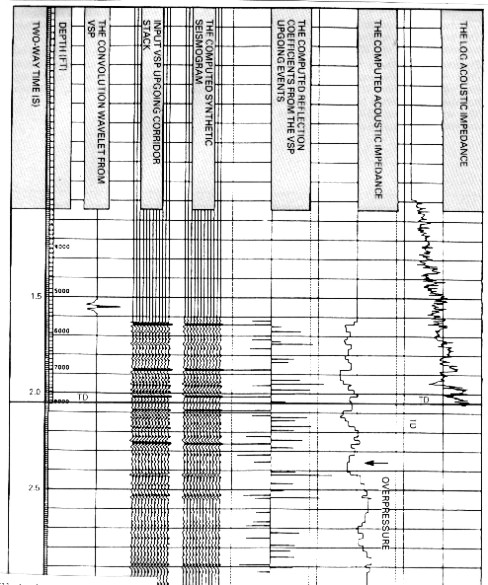
VSP, synthetic seismogram, inverted VSP, and
original sonic log. Arrow shows overpressure zone on inverted
VSP below current drill depth, indicated by base of sonic
log on far right.
A
synthetic VSP can be made, much in the same way as a synthetic
seismogram, and used to model various noise free alternative interpretations,
from which the correct interpretation or further processing steps
might be chosen. Both shear and compressional VSP's can be recorded
and modeled. The software is moderately complicated due to the
radial geometry and the need to track both up- and down-going
signals and their multiples.
Cased
hole VSP's are a valuable aid in evaluation of older wells. Along
with cased hole log analysis for porosity, saturation, and lithology,
they provide almost as much information as can be obtained from
an open hole evaluation. A comparison of open and cased hole VSP's
is provided below.
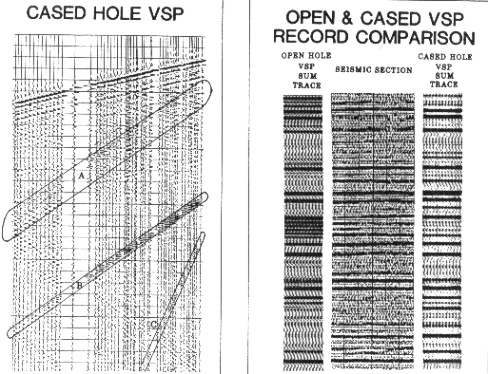
Open and cased hole VSP comparison
|

